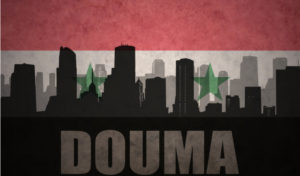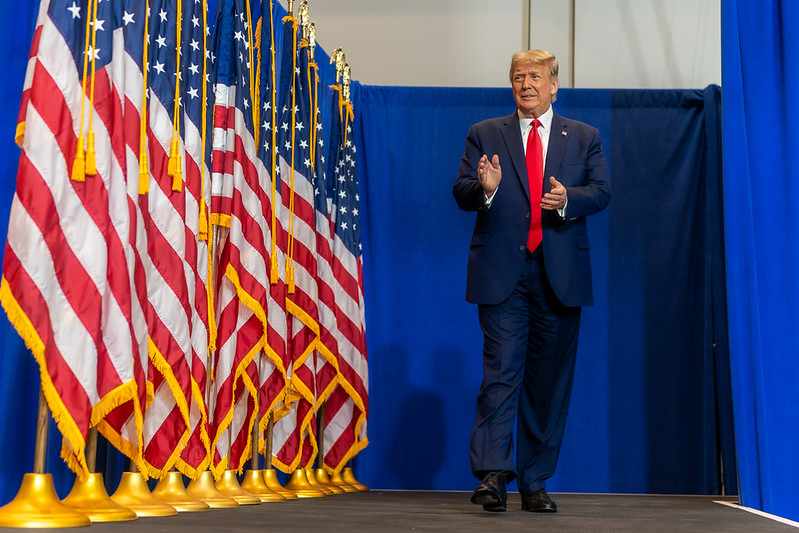
In the rush to war in Syria, most aren’t asking the most basic question, can the “evidence” of the gassing itself be believed? The organization responsible for bringing the gassing evidence is backed by Syrian rebels. That already gives them a conflict of interest when it comes to inducing the U.S. into attacking the Syrian regime of Bashar al-Assad.
In addition to the conflicted sourcing, the group is funded by George Soros’ Open Societies Foundation. Soros is a known trouble maker (look at his meddling in the British pound for the best known example). Writing at The American Conservative, Scott Ritter expands on a critical view of the “evidence.” He writes:
There are two versions of what happened in Douma, a suburb of Damascus home to between 80,000 and 150,000 people. The one relied upon by the United States is provided by rebel forces opposed to Syrian President Bashar al-Assad. According to the Violations Documentation Center (VDC), a non-profit organization comprised of various Syrian opposition groups funded by the Asfari Foundation and George Soros’ Open Societies Foundation, at approximately 12 p.m. the Syrian Air Force attacked the vicinity of the Saada Bakery using munitions believed to contain “poisonous gas.” The VDC cited eyewitness accounts from members of the Syrian Civil Defense, or “White Helmets,” who described the smell of chlorine and the presence of numerous bodies assessed to have succumbed from gas sourced to a Syrian “rocket.” Later, at 7 p.m., a second air strike struck an area near Martyr’s Square, again using munitions assessed by eyewitnesses to contain “poisonous gas.” Doctors from the Syrian American Medical Society (SAMS) described symptoms that indicated that a nerve agent had been used. Images of victims in the locations allegedly attacked were released by a rebel-affiliated social media entity known as the “Douma Revolution” and the “White Helmets.”
Douma is part of a larger district known as Eastern Ghouta which has, since 2012, been under the control of various militant organizations opposed to the regime of Syrian President Bashar al-Assad. In early February 2018, the Syrian Army, supported by the Russian Air Force, began operations to recapture the Eastern Ghouta district. The joint Syrian-Russian offensive was as brutal as it was effective—by March, Eastern Ghouta had been split into three pockets of resistance at a cost of more than 1,600 civilian dead. Two of the pockets capitulated under terms which had the opposition fighters and their families evacuated to rebel-held territory in the northern Syrian province of Idlib. Only Douma held out, where Salafist fighters from the “Army of Islam” (Jaish al-Islam) refused to surrender. On April 5, the situation had deteriorated inside Douma to the point that the rebel defenders had agreed to negotiations that would lead to their evacuation of Douma; the very next day, however, these discussions had broken down, and the Syrian military resumed its offensive. The air attacks described by the VDC occurred on the second day of the resumption of hostilities.
There is a competing narrative, however, provided by the Russian government and those sympathetic to its position. After the breakdown of negotiations between the Douma rebels and the Russian government on April 6, the story goes, the Syrian government offensive to liberate Douma resumed. The Douma rebels, faced with imminent defeat, fabricated the allegations of a chemical attack. Russia had warned of such a provocation back in March 2018, claiming the rebels were working in coordination with the United States to create the conditions for a massive American air attack against Syrian government infrastructure.
Shortly after the Syrian government resumed its offensive against Douma (and after the opposition forces publicized their allegations of Syrian government chemical weapons attacks), the rebel resistance inside Douma collapsed, with the fighters agreeing to be evacuated to Idlib. The Russian military was able to dispatch units to the sites of the alleged chemical weapons attacks and conduct a survey. According to the state-run Russian news, no evidence of a chemical weapons attack was discovered. Representatives of the Syrian Red Crescent who claim to have worked in Douma stated that they have seen no evidence of any chemical weapons use there, either.
Read more here.
If you’re willing to fight for Main Street America, click here to sign up for my free weekly email.




